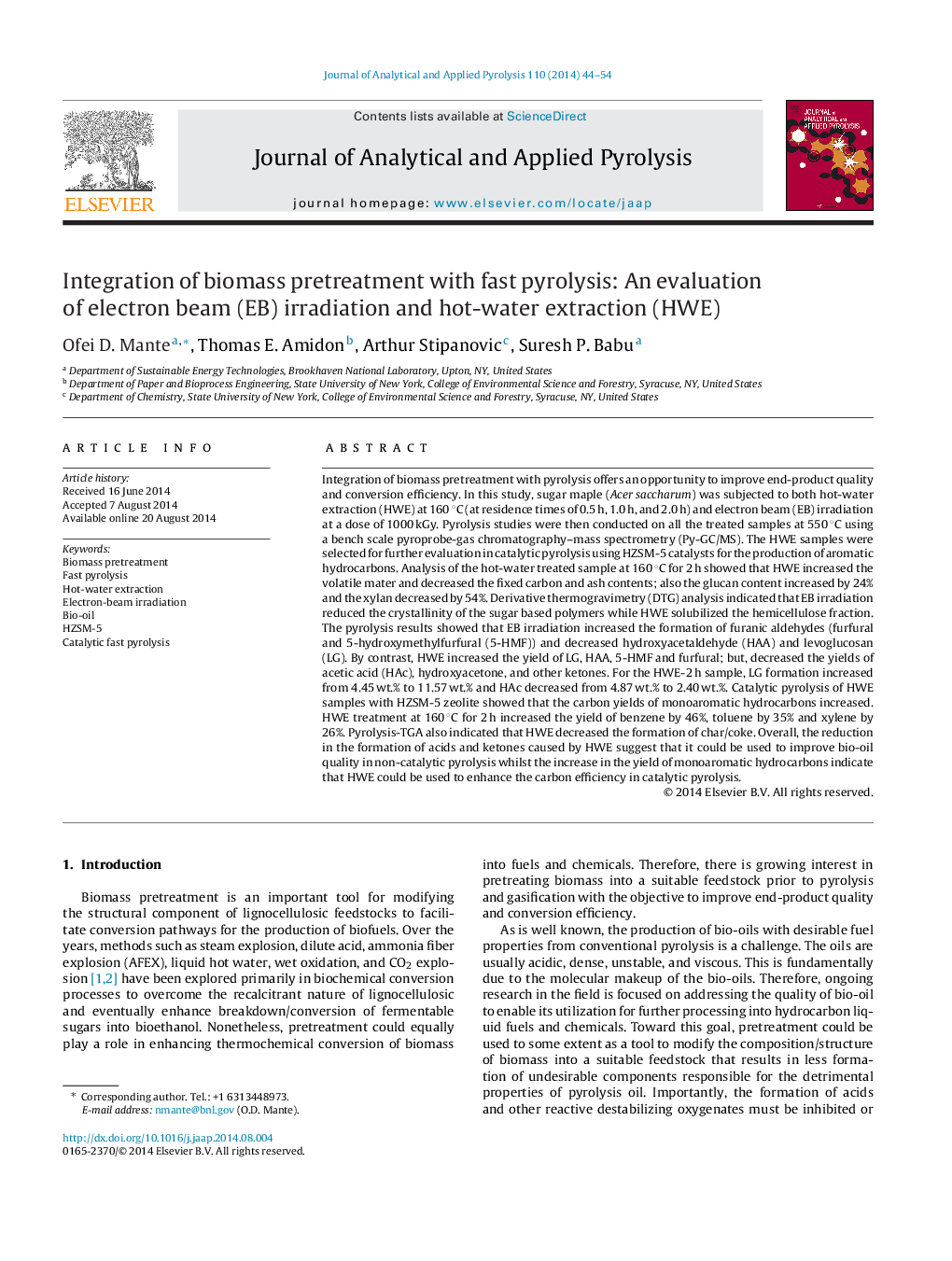| کد مقاله | کد نشریه | سال انتشار | مقاله انگلیسی | نسخه تمام متن |
|---|---|---|---|---|
| 1197289 | 1492967 | 2014 | 11 صفحه PDF | دانلود رایگان |

• Electron-beam irradiation increased selectivity of furfural and 5-HMF.
• HWE pretreatment reduced ketones and acidic oxygenates.
• HWE pretreatment increased the carbon yields of aromatic hydrocarbons.
• EB and HWE pretreatments could improve bio-oil quality.
Integration of biomass pretreatment with pyrolysis offers an opportunity to improve end-product quality and conversion efficiency. In this study, sugar maple (Acer saccharum) was subjected to both hot-water extraction (HWE) at 160 °C (at residence times of 0.5 h, 1.0 h, and 2.0 h) and electron beam (EB) irradiation at a dose of 1000 kGy. Pyrolysis studies were then conducted on all the treated samples at 550 °C using a bench scale pyroprobe-gas chromatography–mass spectrometry (Py-GC/MS). The HWE samples were selected for further evaluation in catalytic pyrolysis using HZSM-5 catalysts for the production of aromatic hydrocarbons. Analysis of the hot-water treated sample at 160 °C for 2 h showed that HWE increased the volatile mater and decreased the fixed carbon and ash contents; also the glucan content increased by 24% and the xylan decreased by 54%. Derivative thermogravimetry (DTG) analysis indicated that EB irradiation reduced the crystallinity of the sugar based polymers while HWE solubilized the hemicellulose fraction. The pyrolysis results showed that EB irradiation increased the formation of furanic aldehydes (furfural and 5-hydroxymethylfurfural (5-HMF)) and decreased hydroxyacetaldehyde (HAA) and levoglucosan (LG). By contrast, HWE increased the yield of LG, HAA, 5-HMF and furfural; but, decreased the yields of acetic acid (HAc), hydroxyacetone, and other ketones. For the HWE-2 h sample, LG formation increased from 4.45 wt.% to 11.57 wt.% and HAc decreased from 4.87 wt.% to 2.40 wt.%. Catalytic pyrolysis of HWE samples with HZSM-5 zeolite showed that the carbon yields of monoaromatic hydrocarbons increased. HWE treatment at 160 °C for 2 h increased the yield of benzene by 46%, toluene by 35% and xylene by 26%. Pyrolysis-TGA also indicated that HWE decreased the formation of char/coke. Overall, the reduction in the formation of acids and ketones caused by HWE suggest that it could be used to improve bio-oil quality in non-catalytic pyrolysis whilst the increase in the yield of monoaromatic hydrocarbons indicate that HWE could be used to enhance the carbon efficiency in catalytic pyrolysis.
Journal: Journal of Analytical and Applied Pyrolysis - Volume 110, November 2014, Pages 44–54